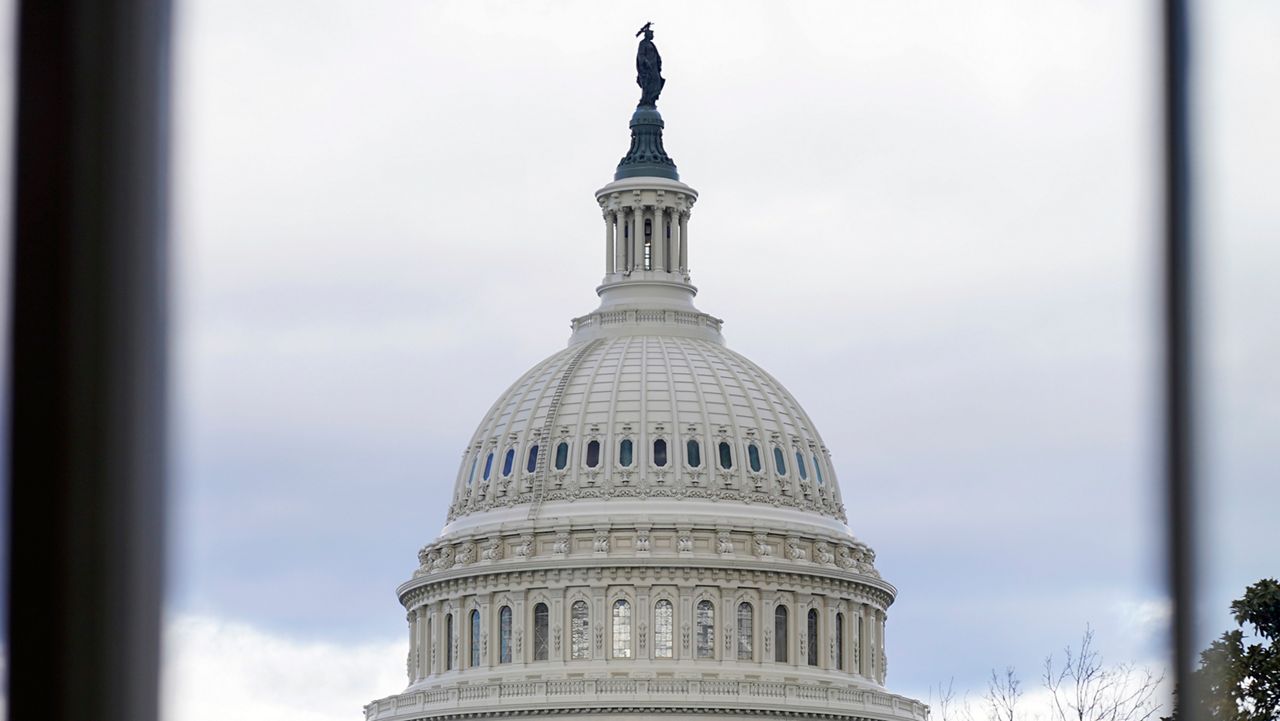WASHINGTON — Parents hoping to enroll their kids at Arthouse Preschool in Waunakee, Wisconsin may have to wait up to a year.
“There is a lack of child care in this area,” said Heather Murray, the owner of Arthouse Preschool. “I've had people come even from the west almost 25 miles, because they can't find child care within their area.”
Murray said operating costs are rising. She's had to raise tuition 6% in the last year and said she's seen firsthand how that affects families.
“When I raised tuition, I did lose two families, because the cost became prohibitive for both parents to work," Murray said. "So then the mother was—in this case, both families—the mother is going to stay at home. It's a lot.”
Wisconsin is one of 11 states where researchers from the non-profit Child Care Aware of America found, on average, families with two children pay at least twice as much for child care as the average rent.
“Child care is in so many ways the backbone of our economy as a whole," said Anne Hedgepath, the chief of policy for Child Care Aware of America. "Because for so many workers in our economy, it is only because of child care that they're able to be present and a part of their workforce and at their job every day.”
Last year, the average yearly price of child care was $11,582 per child. That's up 3.7% from the previous year. In Wisconsin specifically, the average family paid just over $12,272 per year for a toddler in child care, and $13,572 for an infant.
Researchers found a variety of factors that make it even more difficult for rural families to find child care.
“You're dealing with distances and also in some places, lower populations, than of course, some urban communities deal with," Hedgepath said. “Many more families in rural areas live in child care deserts.”
Before the COVID pandemic began in 2020, Murray said she was paying staff between $12-13 an hour. Now, she pays between $18-20 an hour, which is in line with what other child care providers are paying in order to keep staff.
"COVID kind of put that into overdrive: Lack of staff and what they wanted to be paid," she said. "So, that's a big increase of what our overhead has been. But then, you have just paper towels and toilet paper and all of that that has increased. And if we don't have funding from the state or investments from the state, then parents have to cover those costs."
Still, despite rising salaries, Murray said she has issues finding employees.
"There is demand for child care. I have about 30 kids, and I could have 65, but I can't find the staff that would stay," Murray said. "I've been doing this for 18 years. I used to get teachers who couldn't get jobs within the school district. And they would come work for me, but now nobody's going into teaching, either, you know, and it's down across the United States. So, more teacher pipelines would be fantastic. And I think that would help staffing for child care centers across the board."
Congress is working on a bipartisan measure to help expand access to affordable child care in rural communities.
“We want to make sure that people have access to child care," said Rep. Derrick Van Orden, R-Wisconsin. "This is true. We have a smaller population in rural areas. So, it's always a challenge.”
The Expanding Childcare in Rural America Act is part of the five-year Farm Bill that was recently approved by the House Agriculture Committee. It would authorize loans and grants to improve existing child care facilities and to create new ones in low-income, rural communities.
“My district is a child care desert and is forcing families to make impossible decisions," said Rep. Lori Chavez De-Remer, R-Oregon, at a recent House Agriculture Committee hearing. "The Expanding Childcare in Rural America Act will help improve availability and quality of child care in rural communities, helping to lower the insane costs.”
Tyler Wenzlaff, the director of national affairs for the Wisconsin Farm Bureau, said he hopes the Expanding Childcare in Rural America Act helps address problems in rural parts of the state.
"Options are so low as it is," Wenzlaff said. "I know our state legislature has tried to do some of the same things. And so, we hope that this can help keep some of our family farms together and help address some of the child care needs that they have … A lot of people will stay on the farm as much as they can. But, you know, one of the spouses usually has to find a job off the farm just continue to support, either finding child care for that or just to find health care."
While the child care measure has bipartisan support, other provisions of the Republican-led Farm Bill could make it difficult to pass. Among them, changes to crop subsides and funding for nutrition assistance programs like SNAP.
But Murray said additional funding for child care can't come soon enough.
“We can't find staff, we can't cut even, so without investments from the state, I mean, the cost for parents is just going to keep going up. And again, we're gonna price people out of child care,” Murray said.
The current Farm Bill expires at the end of September. But lawmakers are already talking about extending it until after the election, giving them more time to hash out the details of the legislation that will replace it.
"That's always part of the battle," Hedgepath said. "When it comes to Congress, you can have a great idea, but you also have to make sure it's funded."



